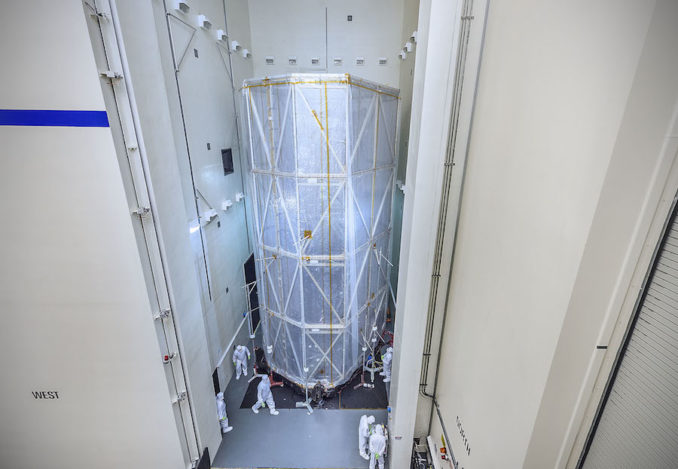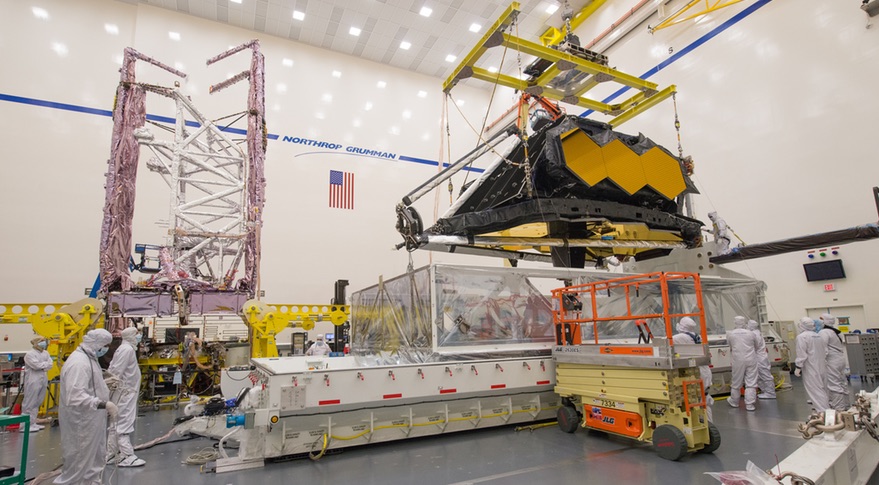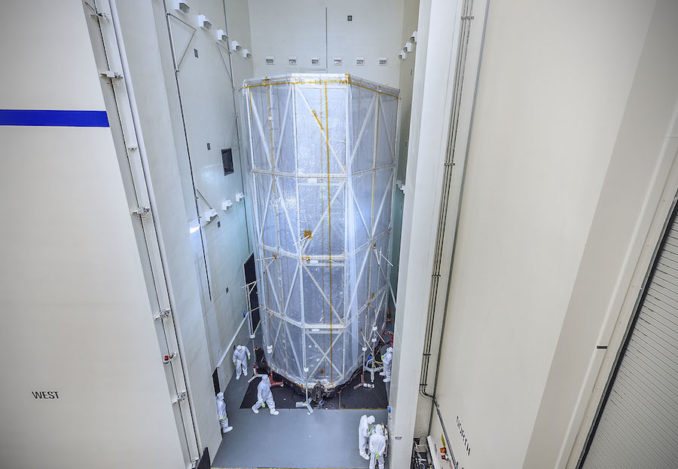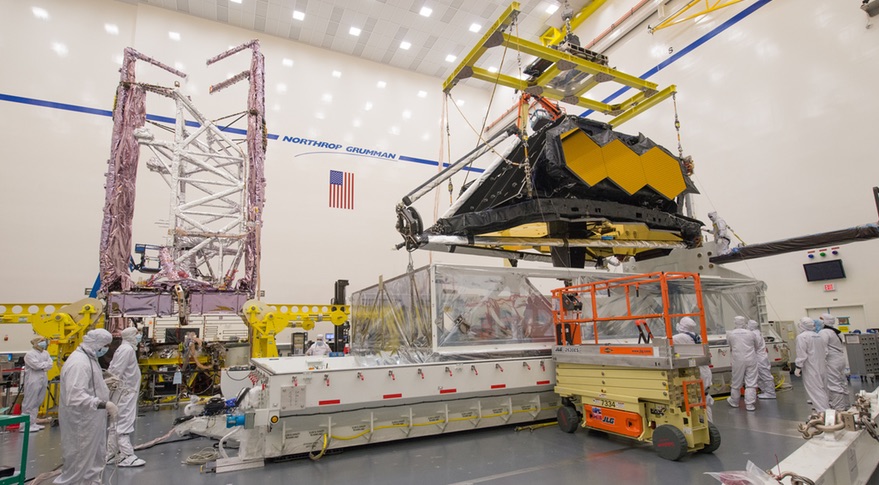Greg Robinson a insisté sur l’importance des tests réalisés au sol pour détecter de tels problèmes.
“Ceci est le parfait exemple de pourquoi les systèmes spatiaux doivent être testés au sol à fond et rigoureusement. Pour mettre à jour les imperfections et régler les problèmes avant le lancement”, a-t’il dit.
Rapportée initialement par Space News, la découverte des agrafes qui se sont détachées survient après que la NASA a décidée, fin mars, de reporter le lancement prévu à partir de mars 2019 au moins jusqu’aux environs de mai 2020, alors qu’un dérapage du calendrier antérieur l’avait déjà reporté d’octobre 2018 à 2019.
Lorsque la NASA a annoncé les dernières prévisions pour le lancement (le 27 mars dernier), les dirigeants décrivirent leurs multiples préoccupations au sujet du vaisseau spatial construit par Northrop Grumman, et qui subit actuellement une série de tests environnementaux qui doivent donner l’assurance qu’il résistera aux rigueurs du vol spatial. Avant les tests acoustiques, les ingénieurs l’avaient placé sur un banc de « tests de chocs » pour simuler les poussées qu’il rencontrera lorsque l’observatoire se séparera du lanceur Ariane 5. Les tests acoustiques l’ont soumis au bruit intense qui accompagnera le lancement, tandis que les tests de vibration – ceux qui restent à venir -, simuleront les secousses et tremblements d’un voyage en fusée.
“Il faut encore du temps pour vérifier et réaliser l’intégration de l’écran solaire d’une énorme complexité avec le vaisseau spatial” a déclaré Thomas Zurbuchen, l’Administrateur Associé de la Direction des Missions Spatiales à la NASA, dans une brève discussion avec des journalistes le 27 mars. “ Ca prend plus de temps que prévu, et il y a aussi quelques erreurs qui se sont produites.”
Proposé il y a plus de 20 ans, le JWST a été repensé de façon à élargir ses capacités observationnelles et surmonter de nombreuses écueils techniques, faisant gonfler son coût d’une projection initiale inférieure à 1 milliard de dollars, à un chiffre qui avoisine actuellement les 10 milliards. Ce chiffre comprenant le lancement et les opérations, ainsi que la contribution des agences spatiales Européenne et Canadienne. Le jWST a déjà couté 7,3 milliards de dollars. Avec le report du lancement, le coût du développement de la mission (hors opérations après le lancement, lequel sera couvert par l’agence Européenne ESA) pourrait s’élever à plus de 8 milliards, ce qui serait au-dessus de la limite fixée par les législateurs. Si cela arrivait, il faudrait procéder à un examen critique et obtenir l’autorisation du congrès américain.
Les dirigeants de la NASA ont identifié plusieurs problèmes qu’ils ont attribué à des erreurs commises par l’équipe de Northrop Grumman: un capteur endommagé qui a été mis sous tension par erreur durant les tests, des valves dans le système de propulsion qui ont dû être remplacées après avoir été incorrectement nettoyées, et un catalyseur du système de chauffage qui a été surchargé à cause d’une mauvaise tension. Les ingénieurs ont aussi trouvé des déchirures dans les membranes de l’écran thermique durant le test de déploiement réalisé pour vérifier la manière dont il se dépliera, une fois dans l’espace, jusqu’à atteindre les dimensions d’un court de tennis. Il a fallu plus de temps que prévu pour le déployer, le plier et le ranger.
Le télescope, avec ses instruments, a été testé d’une manière autonome au Centre des Vols Spatiaux Goddard de la NASA, à Greenbelt dans le Maryland, et au Centre Spatial Johnson à Houston, au Texas, avant d’être envoyé à Redondo Beach, en Californie, dans les locaux de Northrop Grumman, où il est arrivé en début d’année (voir les pages consacrées aux tests au CSJ et au GSFC).
La NASA a déclaré en mars que, dans le futur, la supervision des activités liées au JWST sera renforcée, et qu’une interaction directe sera établie avec le président de Northrop Grumman, et le responsable des opérations. L’agence américaine prévoit aussi de déléguer un chef de projet permanent à l’usine de Northrop Grumman, en même temps qu’elle enverra, durant les opérations critiques lors de l’intégration et des tests, un nombre accru d’experts. Elle a aussi programmé des revues de l’agenda, journalières et hebdomadaires, avec Northrop Grumman, qui de son côté va réorganiser la structure de sa direction, et effectuer des changements de personnel, ainsi que réaliser une mise à jour des procédures.
Certaines des erreurs soulignées en mars résultent de procédures très mal rédigées, ont reconnu les dirigeants de la NASA.










